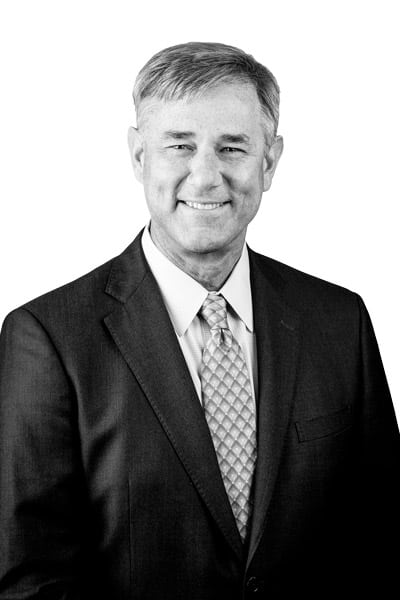
In the fall of 2017, industrial valve manufacturer CIRCOR International announced that it would be acquiring Colfax Fluid Handling in an $855 million deal that included cash, shares in CIRCOR, and assumption of Colfax’s pensions liabilities. It is a major move for CIRCOR that will nearly double its employees from about 2,500 to nearly 4,600. And as the transition into becoming a sizably larger firm comes to a head, Andrew Farnsworth, the company’s chief human resources officer, is charged with building a company culture and a “one-company” sense of unity across the global corporation.
But Farnsworth is no stranger to building a company culture across borders. With more than seventeen years of HR experience, he has worked in global HR roles in Germany, Switzerland, and France for companies such as Compaq, Temenos, Brocade Communications, and Unibail-Rodamco. Since joining CIRCOR in 2015, he’s ensured that HR has a seat at the table and helped the executive leadership team shape the company culture, mission, and vision.
“It’s a privilege for the Gallagher team to partner with Andrew on Circor’s employee benefit programs,” says Erica DeGeorge of consulting firm Arthur J. Gallagher & Co. “His vision for CIRCOR as a destination employer inspires all of us to make it happen.”
Farnsworth spoke with Profile about the challenges of HR leadership on a global scale and shared his advice for HR leaders.
How did you start your career in HR?
It was definitely a serendipitous type of situation. I never thought about HR as a career path at all. After working in finance for ten years, I moved into operations roles and started getting involved with some HR-like topics. I worked closely with senior managers across regions and they started confiding in me on people-related matters.
Then, an HR opportunity came up. I was working in Munich in a strategic planning and sales operations role at that stage, and the leader of the business that I was supporting said to me, “Look, the HR director for this geographic region is leaving to go on maternity leave. She probably won’t come back for a while. Can you step in until we find the permanent solution?” I stepped into the HR role temporarily, and that was seventeen years ago.
What about HR is so appealing to you?
One of the reasons why HR fits so well for me, I would say, is that I come from a family of journalists: My mom, my dad, my grandfather, my brother—it’s a journalistic family. I didn’t go down that path. However, I think I did inherit curiosity and a love of asking questions. In HR, you have a legitimate reason to go and talk to pretty much anyone. You can ask about what their job is or about what keeps them up at night. It’s just fascinating to ask these questions and get a window into the business and pretty much anything. It satisfies that curiosity that I have.
When building a one-company culture at CIRCOR, where do you start?
It’s a tall order. Not only do we have employees scattered across 20–30 different countries, but we sell in many different markets. There can be many different perceptions of headquarters across the company. The way you bridge those gaps is, one, by asking a lot of questions and by visiting people. You have to get out on the road. You can’t be sitting behind your desk too much. It’s hard to do that, but I force myself to get out and visit our sites and meet with employees across the organization.
What’s your role in crafting the company’s vision and mission?
It starts with a vision for the company, and it has to come from the CEO. What we did is have an off-site meeting. At the off-site meeting, the CEO had his homework, and he came with his vision in terms of operational efficiency, growth, shareholder value, HR, and talent. Then, we went from there into a discussion around our strategy as a company. We started connecting the dots between the strategy and the vision. This is just the beginning of that journey, but it’s an essential part. It’s a building block.
Where does HR fit in when the vision and mission have been crafted?
I think HR has to be the catalyst. I did this conjunction with the business development leader. I said to him, “I don’t want to just approach this from a pure HR standpoint. It has to be strategy and culture together.”
To execute on a company vision, what do you believe it takes to be successful from an HR perspective?
First and foremost, there’s probably technical skills that are required at some level. You do need to know at a high level the inter-relationships between the various pieces of the puzzle. However, you can’t know everything. You have to rely on advisers. I think the real skills are in how you work with and influence your key stakeholders.
You also have to be super customer-focused. Know your customer, check in regularly, get feedback, and represent the function in a strong way. Speak the language of the business. Stay connected to the organization across multiple businesses, functions, and locations.
You need to know the job of the company, the business dynamics, and the challenges of the business. If you can talk business to the people you support, then the better off you’ll be. That’s absolutely critical.
What is your advice for an HR leader working on major M&A deals?
Get into the due diligence process as early as possible. Solicit expert advice on pivotal aspects such as executive compensation, benefits, pension liabilities, and culture. Put the best people on the integration teams on both sides. Focus immediately on hearts and minds and building an integrated culture. This is a long-term effort. Communicate to employees, customers, suppliers, and investors on a regular basis—explaining the vision and merits of the combined companies.
It’s a great career opportunity for HR executives because you learn so much, and it’s a fascinating process.
Photo: Randy Brogen

